#Event-Driven Paradigm
Explore tagged Tumblr posts
Text
Event-Driven Design Demystified: Concepts and Examples
🚀 Discover how this cutting-edge architecture transforms software systems with real-world examples. From e-commerce efficiency to smart home automation, learn how to create responsive and scalable applications #EventDrivenDesign #SoftwareArchitecture
In the world of software architecture, event-driven design has emerged as a powerful paradigm that allows systems to react and respond to events in a flexible and efficient manner. Whether you’re building applications, microservices, or even IoT devices, understanding event-driven design can lead to more scalable, responsive, and adaptable systems. In this article, we’ll delve into the core…

View On WordPress
#Asynchronous Communication#Decoupling Components#E-commerce Order Processing#Event Broker Paradigm#Event Sources and Consumers#Event-driven architecture#Event-Driven Examples#Event-Driven Paradigm#Event-Triggered Workflows#Microservices and Events#Middleware in Event-Driven Design#Modular Development#Reactive Systems#Real-Time Responsiveness#Scalable Software Systems#Smart Home Automation#Social Media Notifications#Software Design Patterns#System Event Handling#User Experience Enhancement
1 note
·
View note
Text
i've seen some joking takes on the possibility of Hunter the Parenting being some kind of stealth prequel to Warhammer 40k and at the risk of sounding a bit like a killjoy (but I'm an old WoD fan, its sort of expected probably), I have to say that if you're actually serious about that, I have to say that if you go to the mental brain-break of trying to combine the respective and almost completely incompatible metaphysics/cosmology of all the different WoD gameline, the circumstances of Warhammer 40k happening within WoD is categorically impossible
a few reasons why:
What to know the weirdest thing? The absolute weirdest bit of WoD lore? Okay, get ready for it; space, as we know it, does not technically have an objective reality within the context of WoD. The planets are generally depicted as being spirit realms in their own right. Alien life does not exist, except as weird spirits probably born from ideas until they achieve a retroactive existence. This is related to the fact that science is not an objective facet of reality, but a specific magical paradigm enforced by the Technocracy, the assumed default antagonists of the Mage line, and that includes planets, which technically only exist in a scientific context because people think it does. (If enough people sincerely 'knew' that the planets are crystal spheres pushed by angels, that would retroactively become reality.) So that essentially means that a lot of Warhammer's basic physics, goofy and over the top as they are, can't really exist in the setting in an objective sense. (In theory you COULD, if you got all humanity to believe there's orks and elves in space, but in practice that would be a lot of work without much to show for it, and again, in 40k they just exist. Humanity's opinion on them is irrelevant. In WoD, Earth is the only functional planet for all intents and purposes.)
The Warp is... not exactly the same thing as the Umbra, or the spirit world. In fact, there's several aspects of the Warp (it as a realm of ideas and dreams/nightmares, where faith takes on a form, and so on) that are similar to aspects of the Umbra, but not in the same precise region, and a lot of them have their own existence independent from anyone's belief. Mortal life is, paradoxically, both a largely irrelevant aspect of existence to spirits and the source of what we think of as reality, but that means that not only do equivalents to the Chaos Gods not exist, they probably wouldn't be able to materialize in the 40k way. The Triat, the cosmic forces of the Wyrm and Wyld and Weaver, MIGHT be assumed to be equivalent, but no; they're bigger than the Chaos gods, and sort of in a 'thrashing cosmic force that can be read as not actually being sapient'. That last point is a bit foggy to be honest, since the Wyrm is often described as being driven mad and THAT'S why the force of balance has become malicious corruption, but they are often implied to be cosmic forces that do not and CANNOT make moral choices, but simply do what is in their nature. Tzeentch may make schemes, but he is still shaped by forces and making his decisions, in his own way; the Weaver does not, and when she strives to define all reality into absolute stasis, it is simpler her doing what she IS. But anyway the point is that the Umbra isn't really analogous to the Warp, and its the closest thing in the setting. 3. A lot of 40k's aspects are integral, inalterable parts of the setting that have their own objective reality; psykers exist and pull power from the Warp. WoD is not like this, it is weird and chaotic and a mash up of cosmologies that make no sense in full context, half the time things only exist because people think they do and at the exact same time half the spirits and spirit realms we see are KIND OF like mythologies but also not. Everything is weird and full of secrets and also the world was supposed to have been destroyed several years before the events of WoD, but a big part of the setting is that everyone is facing down one apocalypse or another. 4. If you do obvious magic that people think isn't possible (in terms of what the local paradigm concludes is impossible; time travel machines have the same effect even in places where science is a dominant paradigm because EVERYONE KNOWS TIME TRAVEL ISNT POSSIBLE), you tend to explode. Or get retconned out of reality. Not in the same way as demons being drawn by psykers, but... look, its called Paradox and it gets weird, and reality doesn't like getting bent out of shape. This also means that the kind of impossible feats and blasting attacks typical for 40k Psykers would be EVEN MORE DESTRUCTIVE to them, personally. So the kinds of thing the Emperor is known to do isn't something that could generally happen in the setting of WoD.
25 notes
·
View notes
Text
We're talking about Ads Again
Context for those followers of mine who weren't there: I made a post about tumblr ads being weird back in 2016 and it's literally still getting notes to this day. People responded GREAT to it. honestly, despite being like. ass old at this point and written by a literal high schooler, it's still pretty good! I thank my dad being in advertising helped significantly. I had an expert witness.
Tonight, I'm writing the sequel to that post. the sequel is this post.
let's just fucking dive into it or whatever.
why am I doing this?
okay for starters I made that post in goddamn 2016 and I refuse to believe my insights into the marketing world have not improved since then.
Also, the marketing world has CHANGED. Huge swaths of my old post are no longer relevant. What we saw with tumblr ads in 2016 was in some parts a passing fad, and in other parts the harbinger of a new wave of influencer marketing and corporate parasociality (I coined that term just now).
Honestly I've been thinking for a while that I should make an update post, but what with, yanno, adulthood, that's been kinda hard!
Well, I've missed a train, and it's Christmas, so I've finally found the time to do that.
What has Changed?
in my personal life... dad got fired! yeah it fucking sucks. the good news is he and his wife are working towards their retirement now, shifting away from the industry overall. Good news as far as life is concerned, but it does mean I no longer have as clean a connection to the Industry as I used to.
but more importantly, why he got fired. The fact is, dad's old! I know, shocker. More than just being old, though, his field (and my stepmom's field - they both did the same work) represents an older paradigm of advertisement. he did TV spots and posters, not ad reads for Raid Shadow Legends. He was great at his work, but we're in an era of data-driven, maximalist, google adsense, low-barrier-to-entry, super-fast and super-cheap digital advertisement.
Well, more specifically,
We're on the cusp of an extinction event poised to bring said era crashing to the ground.

Pictured: the current vibes in the ad world
Siberia is on Fire and Everything is Dying
So given that my typical source on stuff like this is currently unemployed, I decided to hit good ol google (well, google and duckduckgo. fitting given what we're talking about) to see if I could get any insights into what the current state of advertising is.
and the short of it is that everyone says the end is nigh. check this out:
Digital is dead, and so is TV. God fucking damn. BY THE WAY, I loved these two articles. Chris Gadek, a man I only learned about today, is clearly an excellent writer and his professional insights are probably gonna be way better than my amateur synthesis of the half-dozen different articles I read today, including his.
blatant shilling for random article writers aside, let's get on to my half-baked synthesis, starting with:
What Set Siberia on Fire
In small part, it's the same issues facing most major companies and industries in our late capitalist world: Hubris.
As this New York Times article points out, we've got a low barrier of entry into a gargantuan industry that's increasingly pumping out slop to follow a strategy of 'more is more'. And we've all seen the bizarre mobile game ads and shady scams that have resulted from THAT.
On top of that, we've also got the fucking digital privacy issue shaking up the entire world as consumers increasingly don't like being spied on (imagine that), and the EU starts rolling out heavy restrictions on the data harvesting that was fueling a bunch of this advertisement bubble.
There's also the ad fraud. Oh, you didn't hear about that? Well, it's nothing much, just that lots of bots are clicking ads to falsify click metrics, artificially inflating the effectiveness of said ads. look, it even has a wikipedia article
oh and Facebook did it. Facebook did ad fraud. :)
and I'm not even getting into everything that works to shake up or demolish basically every advertisement channel out there - the decline of cable tv and print newspapers, the increasing use of ad blockers, the crisis of consumer trust, etc etc.
In short we are looking at a multitude of micro-crises all working together to make the environment unlivable for most current forms of advertisement.
in other words: an extinction event!
Who's Gonna Survive
And just like in a real extinction event, whether or not you survive depends on how good you can adapt to the brave new world you've found yourself in. Old school advertising needs to drastically rethink their everything if they're gonna stay afloat, and every field of the industry needs to recreate itself. As my new favorite writer Chris Gadek says,
"These crises show that there are no safe havens. You can’t substitute one advertising medium for another. Rather than pivot, the advertising industry must adapt and learn to effectively use the channels at their disposal (TV included), factoring in the seismic societal and technological changes that have occurred over the past decade and beyond."
and what is that going to look like? what's going to be the new face of advertising?
The field seems torn, at first... but also aligned, at least when it comes to the core principles:
privacy is a big issue. Seems like a lot of advertisers are seeing an end to wanton consumer surveillance, and looking into less invasive ways to gather important and meaningful data
companies that rely on selling ad space and propping up their engagement metrics are going to be relied on less, probably, because the metrics themselves are being seen as less reliable (for good freaking reason)
regaining consumer trust is going to be a massive priority in the future.
overall, we're probably going to look at a massive downturn in ads, as people turn to a quality-over-quantity strategy in an attempt to stop flooding the attention marketplace.
that's the gist I'm getting from reading oh so many different articles of varying quality from so many different sources.
So, yanno, there may be some hope out there. If smart people start leading this industry (lol), we may get to actually enjoy ads.
Yeah. Enjoy ads.
Unironically.
I know, it's crazy.
PS: if you start seeing affiliate links on mainstream TV ads, thank our lord of excellent business analysis Chris Gadek for calling it early. God, that's such a crazy left-field idea and I really want it to actually happen.
#advertising#advertisement#I'm not apologizing for the chris gadek worship. it's a good running gag fuck you.#this is probably not my best work but in my defense I missed a train and also me writing this got interrupted like 3 times today#i saw a post about ads today and it made me go 'i think the internet needs to know how much this industry is on fucking fire right now'#I am correct of course. y'all need to know.
21 notes
·
View notes
Text
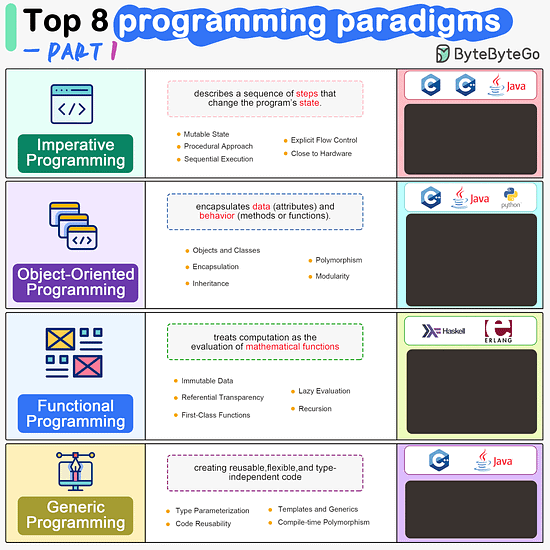
ByteByteGo | Newsletter/Blog
From the newsletter:
Imperative Programming Imperative programming describes a sequence of steps that change the program’s state. Languages like C, C++, Java, Python (to an extent), and many others support imperative programming styles.
Declarative Programming Declarative programming emphasizes expressing logic and functionalities without describing the control flow explicitly. Functional programming is a popular form of declarative programming.
Object-Oriented Programming (OOP) Object-oriented programming (OOP) revolves around the concept of objects, which encapsulate data (attributes) and behavior (methods or functions). Common object-oriented programming languages include Java, C++, Python, Ruby, and C#.
Aspect-Oriented Programming (AOP) Aspect-oriented programming (AOP) aims to modularize concerns that cut across multiple parts of a software system. AspectJ is one of the most well-known AOP frameworks that extends Java with AOP capabilities.
Functional Programming Functional Programming (FP) treats computation as the evaluation of mathematical functions and emphasizes the use of immutable data and declarative expressions. Languages like Haskell, Lisp, Erlang, and some features in languages like JavaScript, Python, and Scala support functional programming paradigms.
Reactive Programming Reactive Programming deals with asynchronous data streams and the propagation of changes. Event-driven applications, and streaming data processing applications benefit from reactive programming.
Generic Programming Generic Programming aims at creating reusable, flexible, and type-independent code by allowing algorithms and data structures to be written without specifying the types they will operate on. Generic programming is extensively used in libraries and frameworks to create data structures like lists, stacks, queues, and algorithms like sorting, searching.
Concurrent Programming Concurrent Programming deals with the execution of multiple tasks or processes simultaneously, improving performance and resource utilization. Concurrent programming is utilized in various applications, including multi-threaded servers, parallel processing, concurrent web servers, and high-performance computing.
#bytebytego#resource#programming#concurrent#generic#reactive#funtional#aspect#oriented#aop#fp#object#oop#declarative#imperative
7 notes
·
View notes
Text


WHY UNIVERSAL BACKGROUND CHECKS ARE JUST AS UNLIKELY AS EVER, UNFORTUNATELY
I'm a leftist (Libertarian-Socialist), who votes progressive, because I live under an "elected" government, and I had thought I had purged the MSNBC/CNN Nation from my friends list, but apparently not, as my timeline is just chock-full of media-driven hysteria over current events, so here's a primer:
"Liberals" who think their arguments are clever or relevant to the Second Amendment are exhausting.
They are not the left; they are just one half of the good cop/bad cop act of the corporate owned fire-hose of bullshit that is the corporate media, and corporate America's governing criminal cartel/duopoly.
Both cults "I like simple and ineffectual 'solutions', because they make me feel like I'm doing something, and I'm just stinky with fear."
There are over a hundred million legal gun owners, who some want to punish for somebody else's crime.
Well, there are some things to consider.
We've been a heavily armed country since 1621, and yet the epidemic of daily mass-shootings didn't begin until 20 April 1999 (Columbine), at a time when gun ownership was at an all-time low, and five years after Clinton's assault-weapons ban, so maybe guns aren't the variable.
Maybe, just maybe, dead school-children are the price of the neoliberalism practiced under the "Washington Consensus" of BOTH right-wing authoritarian parties since the 1980's? When your country offers you no prospects, and you become terrified of the future, what then? Fear can make unstable people do desperate things. Add to that a culture of celebrity, and what could possibly go wrong?
Another factor that goes completely unexamined, is the way Ronald Reagan and Tip O'Neill emptied our state hospitals onto our streets, and onto families ill-equipped to deal with the sometimes violent mentally ill.
Thank God, the "solution" is so simple…
Also, 84% of NRA members support universal background checks. The problem is, every time a bill comes up for a vote, Democrats add poison pill amendments guaranteeing defeat in the legislature (and the courts), and then they proceed to tell the TV cameras that "once again the GOP and the gun lobby have voted down background checks and defied the will of the people", or some such nonsense.
If you want to watch Dems sabotage universal background checks (while Republicans roll their eyes and face-palm) in real time, go here:
P.S. You can probably guess which one of these three groups I belong to (Hint: It's the one that's growing and actually decides elections):
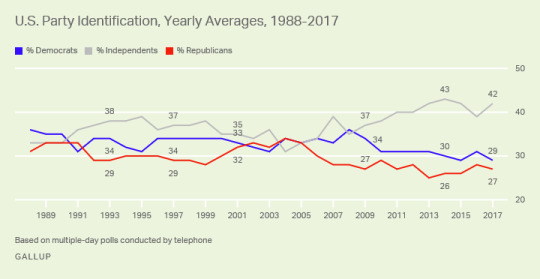
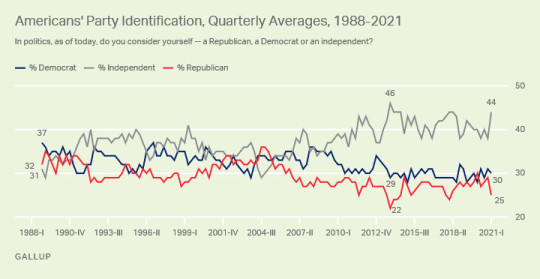
LaborPartyNow!!!
P S The line, "You don't need 30 rounds to shoot a deer!" is not clever.
The Second Amendment has nothing to do with hunting tools, toys for hobbyists (target shooting), or even weapons for self-defense.
It's about ARMS!!!
It's about the individual citizen's right to arms, so they'll be prepared to join a militia, not the other way around. ‘Well regulated’ at that time, simply meant, ‘efficient.’ In other words, in order for a muster to be efficient, civilians needed to be already armed.
So the "collective rights" argument has a couple of problems that make it quite unhinged from history and reality.
1) As I've mentioned above, Americans have always been relatively heavily armed. How did that happen in a collective rights paradigm?
2) Contrary to what you were probably taught in school, by the time of the Confederate artillery barrage on Fort Sumter, the war over slavery had already been going on for over six years, and was fought entirely by independent volunteer militia's. Fort Sumter was just the beginning of official involvement by government troops. How did that happen in a collective rights paradigm?
3) In what universe do government forces need to have their right to arms protected?
4) Since when do National Guard members keep National Guard arms (Hint: they're kept at the armory, and have been since colonial times)?
5) Obviously, "Liberals" are stupid.
Again: #LaborPartyNow!!!
P P S That was ENTIRELY the point of the first fruits of dissent, the 10 Amendments we've come to call the BILL OF RIGHTS (which have become a beacon to aspiring democrats all over the world), to protect INDIVIDUALS from the government they had just created. #TrueStory
32 notes
·
View notes
Note
Yes.
Also If you're okay with it, could you explain what you mean/feel with plural?
I don't really understand it.
(I'm like the fully accepting but totally not understanding dad in series)
I FORGOT WHAT OUR ASKBOX SAID AND WAS SO CONFUSED FOR A MINUTE
Yeah, of course!
Essentially, plurality is multiple people sharing one brain/body, also known as a system. There can be different things that cause this - sometimes it's trauma, sometimes it's spirituality, sometimes the brain just Does That cause human brains are weird. The term for non-systems is singlets.
A good basis for research if you're interested is to look at DID (dissociative identity disorder), formerly known as MPD (multiple personality disorder). This, as well as some forms of OSDD (other specified dissociative disorder) is one of the more well known forms of plurality, usually caused by childhood trauma during the formative years. It comes with heavy amnesia barriers and dissociation a lot of the time. Please remember that this is not a paradigm for all systems, even those with DID or OSDD, it's just a good place to start.
We would also advise if you go down this rabbit hole to stay away from "syscourse", or system discourse. Usually this entails discourse about the existence of endogenic systems (systems that formed without trauma), but often ends in harm to systems of all origins. We personally believe that you can't dictate what goes on in another person(s)'s brain, and while you are ultimately in control of what you choose to engage with please be warned such discourse often ends with negative effects on mental health, from the people we've talked to.
For us personally? I'm almost certainly the "host" or main person that fronts (is in control of the body) and my headmates very rarely talk to me which is kind of annoying. When someone else fronts I often remember that time as a blur, I'm vaguely aware it happened and remember some big events but nothing specific (if you've ever driven for a long time and found that when you get to your destination you don't actually have any concrete memory of the past 3 hours, it's sort of similar). We do have a couple theories for how our system came about, but nothing concrete and definitely nothing we're planning on sharing with the Internet at large (:
I hope this was helpful - and I really hope this made sense cause goodness we're tired right now XD. Thank you so much for asking!
***This is a neutral post, please do not add discourse in the notes***
2 notes
·
View notes
Note
For the fic ask meme! Literally all of them? I’m so curious
Well, it made the most sense to answer this particular ask and let it cover others!
ANSWERS INCOMING.
Keyboard or notebook?
KEYBOARD. When I write by hand, my wrist soon hurts. (Old tendonitis from undergrad, it loves to flare up.) But my fingers can fly across the keyboard fast enough to keep up with any words as they come. When I get into a groove, I can type awfully fast. My single-day writing record was around 18k words, but uhhhh that has not been approached since.
Now, the risk of typing on a keyboard: the computer has all of those other fascinating elements lurking behind the writing window, and it's just so, so easy to tab over to them. To counter this impulse, I'll often fire up Composition Mode in Scrivener, which takes over the screen and hides all of the other things I could be doing.
Beta or no beta?
I don't use a beta, but I do have a writing buddy. We mutually talk each other through knotty/stubborn structural plot elements of our current pieces, and that's where writing challenges usually lie for me.
In terms of cleaning up the fundamentals, I typically do two things before making anything public. One, I bump the font size way up and/or change the font, to make it look like a "new story." Two, I read every word out loud. I've found this to be an incredible way to catch awkward phrasings, repeated words, run-on sentences, etc. that I'd otherwise miss. (It can also help with pinning down character voices if I go full Audio Book Voiceover and add in some vocal flair for each line of dialogue. But you need to be willing to feel like a little bit of an idiot for that part.)
Plot?
My writing buddy constantly makes (friendly) fun of me for how much I'm into PLOT. I cut my teeth on the Wheel of Time and A Song of Ice and Fire series as a younger reader, and those authors fucking. Love. PLOT!
Foreshadowing! Plot twists! Callbacks! The tiniest of hints! The smallest of details! ("No one cares about those details nearly as much as you do, [Miggy]." "DON'T CARE.")
I will say that GRRM's famous Architect vs. Gardener paradigm doesn't fit my plotting style, though. I use what I've dubbed a Road Trip approach, and I'd explain that here, but this is already long enough! I can do it at some other point if anyone's interested?
Smushy or smutty?
I'm fine with smut, I guess, but I prefer it to serve a plot purpose. "These two, overcome with desire for each other, are overjoyed to be reunited" is an example of a place where it could absolutely contribute to the narrative, for example. Otherwise, I'd rather just stick to emotional development and find it to be generally more engaging.
Summary?
Fucking hate them. Ugh. I usually do a quote from the story and then a vague description. Worst part of posting to AO3, truly.
Funniest fic?
Probably something that was lost in my old Livejournal account? I filled an incredible number of anon fic meme prompts there and some of them were actually quite hilarious.
(I miss anon prompt memes so bad. :( That's a huge thing that both Tumblr and AO3 lack.)
Most popular fic?
Legal Partners (Ace Attorney), and it's not close.
Most fun to write?
Probably a poll-driven fic series that I did on Livejournal. I'd write the setup, let people vote on the outcome, and have to figure out how to make it work for the next installment. It was incredibly fun and engaging, riiiiiiight up until some people decided to start setting up a bunch of burner accounts to cheat and managed to ruin the experience for everyone. 🙄
Best and worst?
Worst would definitely be one of the random Yuletide fills I've done. I like the idea of Yuletide, where you gift someone with a fic in a tiny fandom they'd never otherwise get to read. But in reality, the recipients kept adding specific details about romance, timeline, events, etc. that went beyond what they were supposed to provide. As an author, you're technically not constrained by anything beyond the requested fandom and a few specified characters. But if the recipient makes their preferences so very clear, then you're unfortunately faced with a choice between "write the specific thing that would apparently make them happy" and "write a story that you can actually envision, structure, and be proud of." There's a reason I haven't done Yuletide for years.
Best? Well. See. Okay.
I challenged myself to write the stupidest crossover possible. Which meant that I had to make it work. Which meant that I needed to worldbuild. I needed to plot. Weave in foreshadowing. Explain the details. Respect both universes, both in content and mood.
The end result: a Marvel/Glee crossover (really) that a Hugo & Nebula winner has repeatedly encouraged me to file the serial numbers off of, to publish as original work.
¯\_(ツ)_/¯
Most underrated?
Special, the answer to the last question. I've downloaded it as an eBook, and when I've reread it on a plane (or wherever), I do find myself going "man, this IS good."
Strengths?
Plot. :D For the reasons previously detailed. I try not to hold back from swinging at the fences with developments, both negative and positive. At the same time, I want any positives to feel earned and I want any negatives to carry proper dramatic weight, which means not otherwise rolling around in gratuitous suffering.
I just got some great and thoughtful AO3 comments on my current story (need to reply to comments!!!) and this one: "I called it. I FUCKING called that unimaginable agony and pain was coming!"
came two chapters after this one:
"I’m falling in love with these kids so much. Which can only mean we’re in for a whole lotta pain in a chapter or two."
That's what I'm going for, along with the bad -> good reverse direction, too. (…Usually.) I'm basically a Nagito of plotting. You know: hope leads to despair, and vice versa. I want to elevate the mood before everything crumbles, for the reader will feel even more despondent if everything falls from even greater heights. Or flip it around, and happiness feels like an even bigger relief if the plot previously didn't seem to allow for the slightest scrap of it.
Weaknesses?
I absolutely know that this comes from cutting my teeth on fic: environmental descriptions. It felt weird and repetitive to describe locations that any fan would be familiar with, so that led to me glossing over descriptions of where things were happening. Which is all well and good if it's in an existing location, I suppose; a DR fan doesn't need a loving description of a HPA classroom.
But! While editing, I'll often see that I've done the same thing for some new spot, as well. I'll have an image of this new place in my mind, but that description doesn't make it onto the page with more than a few loosely-sketched lines. That doesn't just harm the story's overall quality, but it also lessens the emotional reaction of the reader as they can't wholly picture the scenes as they happen. It's something I keep kicking my own butt over as I repeatedly catch this pretty fundamental error in editing.
Dirty little secrets?
This 'dirty little secret' is all about how I've tee-heed over some reader reactions.
I think the behavior itself is good! For a story of any real length, I have a cardinal rule that I always, always follow: "every important character has to screw up at some point." No one is allowed to be a perfect cinnamon roll, in other words, while other less ~awesome~ people handle the fuck-ups.
Why it's a dirty little secret: I have giggled a LOT in private over responses I've gotten from clear [their favorite character] stans… because they blatantly ignore how their favorite also screwed up. They've cheered me on for having [their non-favorite] fuck up, and are so relieved that I obviously hate [their non-favorite], too.
Meanwhile, other people have told me the exact same thing... but with the two characters reversed! It's just such a blatant example of how people will have their stan blinders on. It amuses me every single time, even if I never ever mention specific examples outside of private conversations.
(Knowing that I have my own stan blinders is what keeps me using that rule, by the way. My favorites have gotta fuck up just like everyone else. Fair's fair!)
3 notes
·
View notes
Text
"Preparing for a Global Environmental Catastrophe: Creative Expansion"

In light of the imminent global ecological catastrophe, recent developments near the city of Armyansk have raised concerns. Reports from the Kherson Regional State Administration indicate that Russian individuals have allegedly initiated the process of sabotaging the Crimea Titan plant, situated in close proximity to the city. This action is purportedly aimed at thwarting the counteroffensive operations of the Ukrainian Armed Forces on the peninsula. Furthermore, Russia intends to shift blame onto the Ukrainian side for the consequences of this criminal act. If the occupiers resort to such terrorist actions, environmental experts predict that a poisonous cloud of emissions may engulf Ukraine, Turkey, and even parts of Russia itself. It is important to note that the Crimea Titan plant is the largest producer of titanium dioxide in Eastern Europe.
Amidst the escalating global environmental crisis, nations around the world are grappling with the urgent need for sustainable solutions. The incident involving the Crimea Titan plant serves as a chilling reminder of the potential ramifications that destructive actions can have on both regional and international levels. Beyond its immediate political implications, this act of sabotage has far-reaching ecological consequences that demand our attention.
The Crimea Titan plant, renowned as the preeminent producer of titanium dioxide in Eastern Europe, holds significant industrial and economic importance. Titanium dioxide is a versatile compound used in various industries, including paint, cosmetics, and plastics. The plant's massive production capacity underscores its crucial role in supplying this essential component to meet the demands of numerous sectors.
However, the dark cloud of environmental devastation looms over this dire situation. If the perpetrators succeed in their nefarious plot, the release of toxic emissions from the sabotaged plant could trigger an ecological disaster of unprecedented magnitude. The potential fallout extends beyond the immediate vicinity, with Ukraine, Turkey, and even parts of Russia at risk of being engulfed by the poisonous cloud.
The consequences of such an event would be catastrophic, with far-reaching implications for human health, ecosystems, and the delicate balance of our planet. The toxic cloud could permeate the atmosphere, causing respiratory ailments, contaminating water sources, and decimating wildlife populations. The long-term effects on the affected regions would be immeasurable, with lasting damage to biodiversity, agriculture, and local economies.
Recognizing the gravity of this situation, global attention must be directed towards preventive measures and collaborative efforts to avert this potential catastrophe. It is imperative that the international community comes together to condemn such acts of environmental terrorism and holds the responsible parties accountable for their actions.
Moreover, this incident underscores the pressing need for a paradigm shift in our approach to environmental protection. As we confront the consequences of climate change and face the specter of global ecological collapse, it is crucial that we prioritize sustainable practices, invest in renewable energy sources, and foster international cooperation in addressing environmental challenges.
he reported attempt to sabotage the Crimea Titan plant near Armyansk serves as a sobering reminder of the grave threats posed by actions driven by political agendas. Beyond the immediate security concerns, the potential environmental repercussions of such an act demand our attention. The prospect of a toxic cloud enveloping Ukraine, Turkey, and parts of Russia underscores the urgency of taking decisive action to prevent this ecological catastrophe. Only through collective effort and a commitment to sustainable practices can we safeguard our planet and ensure a brighter future for generations to come.
#Global environmental catastrophe#Ukraine-Russia tensions#Ecological disaster#International cooperation
3 notes
·
View notes
Text
Leading off with a disclaimer (always a good thing, right?): Max Landis is not a good human, and this post is not meant to endorse him. So Wrestlemania is happening this weekend. I may have mentioned it a couple times. So I'd like to share the specific thing that was literally have the reason I started watching Wrestling. Via a podcast by internet comedy/streaming group LoadingReadyRun, I heard about this kind of pseudo-video essay on youtube called Wrestling Isn't Wrestling. It talks about how professional wrestling is this kind of unique storytelling medium particularly when it comes to long-form character-driven narratives, and it does so by looking at the (at the time) entire career of a single character within the WWE canon: The Game. The Cerebral Assassin, The King of Kings. Triple-H.
youtube
And yeah, that got me to start watching WWE (Well first it got me to listen to all of LoadingReadyRun's wresting podcast, then it got me to start watching WWE). But something you don't necessarily get from watching that video, something that, in my mind, is what makes wrestling so unique as a medium, is that a lot of that story Max runs down in the video is kind of backmasked onto the events in retrospect. The writers and bookers in professional wrestling didn't really plan out the decades-long arc of Papa Haitch from outsider>rebel>suit>tyrant, it just kind of happened. And I don't even mean in the Pantser vs Plotter or Plan your Story vs Grow your story paradigm. It's more like how in openworld games, players will figure something out that's fun or rewarding to do that's not enforced by any of the coded rules or objectives and may be outside the realm of what the devs anticipated happening in their creation, and collectively the community just makes it a defacto part of the game. Emergent gameplay, yeah? Except with story. Emergent Narrative. Wrestling fans looked back over the career of Paul "Hunter Hearst Helmsley" Lavesque and basically projected that arc onto him. When Tripps called Daniel Bryan a B+ Player and kept interfering with his opportunities, no one behind the scenes necessarily intended it to be 'he sees himself in Bryan and he's taking out his self-hatred on him,' but in retrospect, yeah it makes sense. It's not really something that can be easily planned planned or set up, and I feel the closest analogue for it outside of wrestling is the in-depth 'it's crazy but there's evidence that plausibly supports it' fan theories for stuff like Star Wars or Five Nights at Freddy's, but even then it still has kind of a different flavor. But yeah, just incase you wanted something else that makes wrestling as a whole cool/nerdy: long-reaching fantheories that are basically canon.
2 notes
·
View notes
Text
Price: [price_with_discount] (as of [price_update_date] - Details) [ad_1] Design and develop high-performance software solutions by using concurrent and asynchronous techniques provided by the most modern features in C++20 and C++23Key FeaturesLearn how to use modern C++ features, including futures, promises, async, and coroutines to build asynchronous solutionsDevelop cross-platform network and low-level I/O projects with Boost.AsioMaster optimization techniques by understanding how software adapts to machine hardwarePurchase of the print or Kindle book includes a free PDF eBookBook DescriptionAs hardware advancements continue to accelerate, bringing greater memory capacity and more CPU cores, software must evolve to adapt to efficiently use all available resources and reduce idle CPU cycles. In this book, two seasoned software engineers with about five decades of combined experience will teach you how to implement concurrent and asynchronous solutions in C++.You’ll gain a comprehensive understanding of parallel programming paradigms—covering concurrent, asynchronous, parallel, multithreading, reactive, and event-driven programming, as well as dataflows—and see how threads, processes, and services are related. Moving into the heart of concurrency, the authors will guide you in creating and managing threads and exploring C++’s thread-safety mechanisms, including mutual exclusion, atomic operations, semaphores, condition variables, latches, and barriers. With this solid foundation, you’ll focus on pure asynchronous programming, discovering futures, promises, the async function, and coroutines. The book takes you step by step through using Boost.Asio and Boost.Cobalt to develop network and low-level I/O solutions, proven performance and optimization techniques, and testing and debugging asynchronous software.By the end of this C++ book, you’ll be able to implement high-performance software using modern asynchronous C++ techniques.What you will learnExplore the different parallel paradigms and know when to apply themAcquire deep knowledge of thread management and safety mechanismsUnderstand asynchronous programming in C++, including coroutinesLeverage network asynchronous programming by using Boost.Asio and Boost.CobaltAdd proven performance and optimization techniques to your toolboxFind out how to test and debug asynchronous softwareWho this book is forThis book is for developers who have some experience using C++, regardless of their professional field. If you want to improve your C++ skills and learn how to develop high-performance software using the latest modern C++ features, this book is for you.Table of ContentsParallel Programming ParadigmsProcesses, Threads, and ServicesHow to Create and Manage Threads in C++Thread Synchronization with LocksAtomic OperationsPromises and FuturesThe Async FunctionAsynchronous Programming Using CoroutinesAsynchronous Programming Using Boost.AsioCoroutines with Boost.CobaltLogging and Debugging Asynchronous SoftwareSanitizing and Testing Asynchronous SoftwareImproving Asynchronous Software Performance ASIN : B0DMTDKZWV Publisher : Packt Publishing; 1st edition (29 November 2024) Language : English File size : 3282 KB Text-to-Speech : Enabled Screen Reader
: Supported Enhanced typesetting : Enabled X-Ray : Not Enabled Word Wise : Not Enabled Print length : 615 pages [ad_2]
0 notes
Text
The Role of a GA4 Implementation Agency in Unlocking Actionable Insights

Google Analytics 4 (GA4) represents a significant evolution in digital analytics, shifting from traditional session-based tracking to a more advanced event-driven model. While this transformation offers unparalleled capabilities for businesses to understand user behavior, it also introduces complexities in implementation and optimization. This is where a GA4 implementation agency plays a crucial role. By leveraging their expertise, businesses can unlock actionable insights that drive smarter decision-making and enhanced performance.
Understanding GA4: A Paradigm Shift in Analytics
GA4 is designed to address the modern needs of cross-platform tracking and privacy-centric data collection. Key features include:
Event-Based Tracking: Replaces the session-based model for a more granular view of user actions.
Enhanced User Journey Insights: Tracks users across websites, apps, and devices seamlessly.
Predictive Analytics: Uses machine learning to provide insights into user behavior and trends.
Privacy-First Approach: Adapts to a cookieless future with enhanced data privacy measures.
While these features are powerful, implementing GA4 effectively requires expertise in data architecture, tracking setup, and reporting customization. This is where a GA4 implementation agency becomes indispensable.
How a GA4 Implementation Agency Adds Value
A specialized GA4 implementation agency ensures businesses harness the full potential of GA4 by focusing on strategic planning, precise execution, and ongoing optimization. Here’s how they contribute to unlocking actionable insights:
1. Customized Implementation for Business Goals
Every business has unique objectives, whether it’s increasing e-commerce conversions, optimizing content performance, or understanding app usage. A GA4 implementation agency customizes the tracking setup to align with these goals.
Event Mapping: Agencies identify and configure key events such as button clicks, form submissions, and video plays.
Custom Parameters: They create custom dimensions and metrics tailored to specific business needs.
Enhanced Measurement: Agencies ensure GA4’s enhanced measurement capabilities, like scroll tracking and outbound clicks, are accurately configured.
This tailored approach ensures that the collected data is relevant, actionable, and aligned with business priorities.
2. Advanced Tracking Capabilities
GA4’s strength lies in its ability to track user interactions across platforms. An agency ensures that these capabilities are fully utilized:
Cross-Platform Integration: Agencies set up tracking across websites, mobile apps, and other platforms, enabling a unified view of the user journey.
E-commerce Tracking: For online stores, agencies implement detailed tracking for transactions, product performance, and cart abandonment.
Custom Funnels and Paths: Agencies configure custom funnels and path analysis to uncover bottlenecks and optimize conversion rates.
With advanced tracking, businesses gain a deeper understanding of how users engage with their digital assets.
3. Enhanced Reporting and Dashboards
GA4’s reporting interface is robust but can be overwhelming without proper configuration. Agencies streamline the process by creating custom dashboards and reports that provide actionable insights at a glance.
Data Visualization: They design user-friendly dashboards highlighting key metrics and trends.
Segmentation and Audiences: Agencies help businesses segment users based on behavior, demographics, and interests, enabling targeted marketing campaigns.
Predictive Insights: By leveraging GA4’s machine learning models, agencies provide insights like purchase probability or churn risk, helping businesses act proactively.
Tailored reporting ensures that decision-makers can quickly access the information they need to drive results.
4. Ensuring Data Accuracy and Integrity
Data accuracy is critical for reliable insights. A GA4 implementation agency conducts thorough testing and validation to ensure the setup is error-free.
Tag Management: Agencies use tools like Google Tag Manager to implement and manage tracking efficiently.
Debugging and Validation: They identify and resolve tracking issues to prevent data discrepancies.
Event Calibration: Agencies continuously monitor and refine event configurations to adapt to evolving business needs.
Accurate data forms the foundation for actionable insights, and agencies play a key role in maintaining this integrity.
5. Ongoing Optimization and Support
The digital landscape is dynamic, and so are analytics requirements. GA4 implementation agencies provide ongoing support to ensure businesses stay ahead.
Regular Audits: Agencies perform periodic audits to ensure the tracking setup remains aligned with business goals.
Training and Consultation: They empower teams with the knowledge to interpret GA4 data effectively.
Scalability: Agencies adapt the analytics setup to accommodate growth, new platforms, or changing business strategies.
This proactive approach ensures businesses continue to derive value from their analytics investment over time.
Unlocking Actionable Insights with GA4
The ultimate goal of GA4 implementation is to turn raw data into actionable insights that drive growth. A GA4 implementation agency helps businesses:
Identify user behavior patterns and preferences.
Optimize marketing strategies with data-driven audience targeting.
Enhance website and app performance by addressing user pain points.
Increase ROI by refining conversion paths and user engagement strategies.
These insights enable businesses to make informed decisions that improve user experience, boost conversions, and achieve sustainable growth.
Conclusion
The transition to GA4 presents both opportunities and challenges for businesses. While the platform offers powerful tools for understanding user behavior and optimizing performance, effective implementation is critical to unlocking its full potential. A GA4 implementation agency provides the expertise needed to set up, manage, and optimize GA4 for actionable insights.
By partnering with a GA4 implementation agency, businesses can confidently navigate the complexities of modern analytics, gaining the clarity and precision needed to succeed in an increasingly competitive digital landscape. Whether it’s streamlining data collection, creating custom reports, or leveraging predictive analytics, these agencies ensure that GA4 becomes a cornerstone of informed decision-making and business growth.
0 notes
Text
International Conference on Human–robot interaction and Automation
Advancing Human-Robot Interaction and Automation: A Comprehensive Insight into the International Conference on Human–Robot Interaction and Automation 2025
Theme: Advancements in Human-Robot Interaction and Automation for a Smarter FutureDate: July 1–2, 2025 Venue: Paris, France
Taking place in the culturally and technologically dynamic city of Paris, the International Conference on Human–Robot Interaction and Automation 2025 is set to convene some of the most brilliant minds from academia, industry, and research to talk about developments in automation and human-robot interaction (HRI). Across a variety of industries, this flagship event provides a crucial forum for discussing new trends, technologies, and issues that are changing how people work with intelligent systems.
This conference encourages attendees to investigate, learn, and help create game-changing solutions as automation and robotics become more and more integrated into contemporary life. Enhancing human-robot collaboration, increasing efficiency, and addressing the ethical and societal ramifications of automation are the main objectives.
The Relevance of Human-Robot Interaction and Automation in Modern Society
The exponential expansion of automation and robots has caused paradigm shifts in a number of industries, including manufacturing, healthcare, education, logistics, and more. Productivity and innovation have been redefined by the incorporation of robots into daily life in conjunction with cutting-edge technology like artificial intelligence (AI), the Internet of Things (IoT), and machine learning (ML).
But this development brings up a number of crucial issues:
How can humans and robots coexist peacefully?
What moral ramifications does automation have?
What effects do social and cultural settings have on interactions between humans and robots?
In order to answer these concerns, the Human–Robot Interaction and Automation Conference offers a special fusion of networking opportunities, hands-on workshops, and scientific rigor.
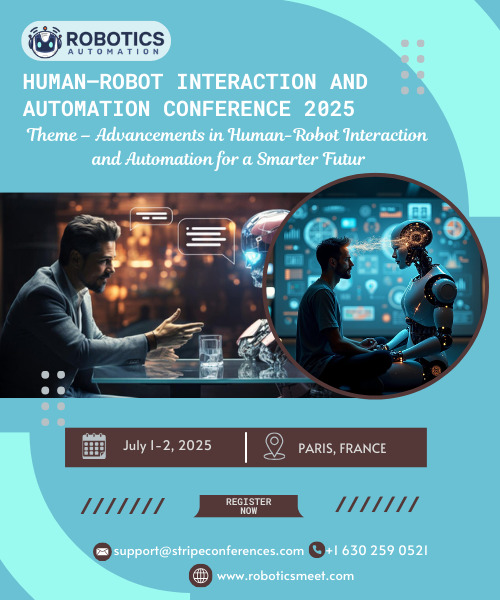
Key Themes and Focus Areas
1. Advances in Human-Robot Interaction and Interaction
Collaboration between humans and robots is no longer a sci-fi idea. By fusing robotic accuracy and efficiency with human creativity and decision-making, collaborative robotics is revolutionizing a variety of industries, from cobots in factories to assistive robots in healthcare.
This meeting will cover:
Advanced Interaction Technologies: Developments in voice commands, haptic feedback, and gesture recognition that improve communication between humans and robots.
Real-World Applications: Examples of how cobots are increasing productivity in retail, shipping, and manufacturing.
Overcoming trust barriers and guaranteeing smooth cooperation between humans and machines are challenges in collaboration.
2. The Effects of Advanced Automation Technologies
The foundation of Industry 4.0 is automation technology, which makes data-driven operations, autonomous systems, and smart factories possible. This meeting's main topics will be:
AI-Driven Automation: How industrial processes are optimized by machine learning algorithms
3. Ethical and Social Considerations in Robotics and Automation
3. Social and Ethical Aspects of Automation and Robotics
The necessity for legal oversight increases as robots become integrated into society more and more. Ethics in Design: Ensuring equity and inclusion in AI-driven systems is the topic of this seminar.
Social Impact: Being aware of how automation impacts social institutions and employment.
Privacy concerns: striking the right balance between user confidentiality and data collecting.
The following will be important questions
Should robots be able to make important decisions on their own?
How do we make sure that robotics and AI don't promote prejudices in society?
4. Designing Intuitive and User-Friendly Robotic Systems
Accessible and user-focused system design is essential to automation's success. Highlights of this session:
Creating robots that adjust to the wants and needs of their users is known as human-centered design.
Cultural Contexts: Examining how geographical variations affect the usability and acceptance of robots.
Future Trends: Investigating user interfaces that enable a variety of user groups to easily understand robotics.
5. The Future of Work and Automation
There are advantages and disadvantages to automation in the job. The following topics will be covered in this session: Job Creation and Displacement: Finding a Balance Between Workforce Automation and Job Security.
Developing skills: Getting employees ready for jobs in automated settings.
Robots as Coworkers: Techniques that Support Human-Intelligent System Collaboration.
Scientific Sessions: Delving into Specialized Areas
The conference’s scientific sessions offer a deep dive into niche areas of human-robot interaction and automation, including:
1. Ethics and Social Implications of Robotics and Automation
Examining the moral and societal dimensions of robotics integration, this session tackles:
Governance frameworks for autonomous systems.
The long-term impact of automation on societal norms.
2. Robotics in Assistive and Healthcare Applications
Robots are becoming indispensable in healthcare, from robotic-assisted surgeries to rehabilitation aids. Topics include:
Assistive technologies for elderly care.
The role of robotics in mental health interventions.
3. Industry 4.0 Automation Driven by AI
Examine how AI, IoT, and robotics are combining to alter many industries, with a particular emphasis on predictive analytics for manufacturing.
autonomous supply chain management and logistics systems.
4. Human-Robot Communication in Self-Driving Cars
One of the main areas of HRI is autonomous vehicles. This meeting will go over:
fostering confidence in autonomous vehicles.
utilizing human-centric design to improve productivity and safety.
5. Robotics in Extreme and Dangerous Environments
Robots are essential in dangerous situations like:
Response and recovery to disasters.
space and deep-sea exploration
Workshops and Live Demonstrations
The Human–Robot Interaction and Automation Conference emphasizes hands-on learning through workshops and live demonstrations. Attendees can:
Interact with state-of-the-art robotic systems.
Participate in practical training sessions.
Learn from live case studies showcasing real-world applications.
Networking Opportunities
The conference facilitates connections between professionals from around the world by: Panel Discussions: Interact with academic leaders and industry leaders.
Social Events: Develop deep connections with coworkers and peers.
Keynote Meet-and-Greets: Learn from leading experts in automation and robotics.
Why Attend?
1. Explore Cutting-Edge Research and Technologies
Gain access to groundbreaking innovations in human-robot interaction, advanced automation systems, and AI-driven applications.
2. Address Ethical and Social Challenges
Contribute to discussions on the societal impact of automation and help shape policies that promote fairness and inclusivity.
3. Develop Practical Skills
Participate in workshops to acquire hands-on experience with cutting-edge robotics and automation tools.
4. Expand Your Professional Network
Connect with researchers, developers, and industry leaders to explore collaborative opportunities.
The Venue: Paris, France
Paris, with its blend of history, culture, and innovation, is the perfect host for this global conference. Attendees can explore iconic attractions such as:
The Eiffel Tower.
The Louvre Museum.
The Champs-Élysées.
Beyond the sessions, participants can savor Parisian cuisine, experience the vibrant art scene, and immerse themselves in the city’s rich cultural heritage.
Registration Details
Oral Presentation Speaker Registration: $795
Postgraduate Student Registration Fee: $395
Participant and Attendee Delegate Registration: $795
On March 1, 2024, early bird registration will open.
Don't pass up this chance to take part in a historic celebration right in the middle of Paris!
Conclusion
For anyone interested in the future of automation and robotics, the International Conference on Human–Robot Interaction and Automation 2025 is a historic occasion. This conference aims to: Motivate with innovative developments.
Using provocative conversations, question accepted wisdom.
Give participants real-world experience and international contacts.
Come discuss how to develop the future generation of intelligent systems and human-robot cooperation with us in Paris on July 1–2, 2025. Let's work together to build a more inventive and intelligent future.for anybody interested in the future of healthcare because of its extensive agenda and emphasis on teamwork.
International Bio-inspired Robotics Conference | Bio-inspired Robotics Conference | Biorobotics Conferences | Biorobotics Events | Biorobotics Summit | Robotics Congress | International Conference on Machine Learning and Robotic Control Systems | Machine Learning and Robotics Conference | Robotics Conference | Machine Learning Summit | Robotics Events | Robotics Summit | International Conference on Robotics in Healthcare | Robotics Healthcare Conference | Medical Robotics Conference | Surgical Robotics Conference | AI Medicine Conference | Medical Summit | International Conference on Medical Robotics and Surgical Robots | Robotic Surgery Conference | Robotics Healthcare Conferences | Medical Robotics Conference | Robotics Healthcare Summit | AI Medical Conference | International Conference on Robotics and Artificial Intelligence | Robotics Conference | Artificial Intelligence Conference | AI Conference | Robotics Summit | AI Summit | International Conference on Aerospace Engineering and Robotics | Aerospace Engineering Conference | Aerospace Conference | Aerospace Events | Aerospace Summit | Robotics Conference | International Conference on Ethics and Safety in Robotics | Ethics Safety Conference | Ethics Conference | AI Ethics Summit | Robotics Ethics Event | AI Safety Conference | International Conference on Human–Robot Interaction and Automation | Automation Conference | Human-Robot Interaction Conference | Automation Events | Human-Robot Summit | Automation Summit.
0 notes
Text
How Stock Analysis AI Is Revolutionizing Market Predictions and Investment Strategies
In the rapidly evolving financial landscape, the integration of technology has led to significant advancements in various sectors. Among these technological innovations, Stock Analysis AI stands out as a transformative force that is reshaping how investors and analysts approach market predictions and investment strategies. With its ability to process vast amounts of data and identify patterns that human analysts might overlook, Stock Analysis AI is not just a tool but a game changer in the world of finance.

The Rise of Stock Analysis AI: A New Era in Investment
As the stock market becomes increasingly complex, traditional methods of analysis that relied heavily on historical data and subjective judgment are proving to be inadequate. The emergence of Stock Analysis AI represents a paradigm shift that leverages machine learning algorithms to enhance decision-making processes. By utilizing sophisticated models, these AI systems can analyze trends, evaluate risks, and predict future stock performance with remarkable precision.
One of the most significant advantages of Stock Analysis AI is its ability to handle large datasets from multiple sources. Financial news, social media sentiment, economic indicators, and trading volumes can be processed simultaneously, providing a holistic view of the market. For instance, an AI system can analyze thousands of news articles and social media posts in real-time, gauging public sentiment about a particular stock or sector. This comprehensive analysis enables investors to make informed decisions based on the latest information rather than relying solely on historical data.
Enhancing Predictive Accuracy Through Machine Learning
The core of Stock Analysis AI lies in its machine learning capabilities, which allow it to learn from past data and continuously improve its predictive models. Unlike traditional statistical methods that often assume a linear relationship between variables, machine learning algorithms can recognize complex, non-linear patterns. This adaptability is crucial in today's fast-paced market, where conditions can change rapidly due to geopolitical events, economic shifts, or technological advancements.
For example, a machine learning model can analyze the impact of a new government policy on specific industries by considering various factors such as stock performance, trading volume, and historical reactions to similar policies. As a result, investors equipped with insights derived from these advanced models can anticipate market movements more accurately, leading to better investment strategies.
Furthermore, Stock Analysis AI can significantly reduce human error in the decision-making process. While human analysts are prone to biases and emotional reactions, AI operates based on data-driven insights. This objectivity allows investors to focus on rational strategies rather than being swayed by market emotions or sensational news headlines.
Real-time Data Analysis: The Key to Competitive Advantage
In the financial world, timing is everything. Investors who can act quickly on emerging trends often gain a competitive edge. Stock Analysis AI excels in real-time data analysis, enabling investors to respond promptly to market changes. With the ability to monitor stock prices, news updates, and social media sentiment continuously, AI systems can generate alerts for significant developments, ensuring that investors remain informed and agile.
Moreover, the integration of Stock Analysis AI with trading platforms allows for automated trading strategies. These strategies can be programmed to execute trades based on predefined criteria, such as price thresholds or sentiment analysis results. This automation not only streamlines the trading process but also eliminates the emotional component that can lead to poor investment decisions. As a result, investors can capitalize on short-term market fluctuations without the stress of manual trading.
The Role of Natural Language Processing in Stock Analysis AI
Another critical aspect of Stock Analysis AI is its use of Natural Language Processing (NLP), which enables machines to understand and interpret human language. NLP allows AI systems to analyze news articles, earnings reports, and even social media conversations to extract relevant information that could impact stock prices. By understanding the context and sentiment behind the words, AI can gauge the potential implications for specific stocks or sectors.
For instance, if a major tech company announces a groundbreaking product, NLP can help analyze how the news is being received across various platforms. The AI can determine whether the sentiment is predominantly positive or negative, allowing investors to assess the potential impact on the company's stock price. This nuanced understanding of language and sentiment further enhances the capabilities of Stock Analysis AI in providing actionable insights.
Challenges and Limitations of Stock Analysis AI
Despite its many advantages, the implementation of Stock Analysis AI is not without challenges. One of the primary concerns is the quality of the data being fed into the system. AI models are only as good as the data they are trained on, and poor-quality data can lead to inaccurate predictions. Therefore, ensuring access to reliable, high-quality data is essential for maximizing the effectiveness of Stock Analysis AI.
Additionally, while AI can enhance predictive accuracy, it is not infallible. The stock market is influenced by a multitude of unpredictable factors, including global events, economic shifts, and changes in consumer behavior. While AI can identify patterns and trends, it cannot predict every market movement with certainty. Investors must remain vigilant and supplement AI insights with their own analysis and market knowledge.
The Future of Stock Analysis AI: Trends and Innovations
As technology continues to advance, the future of Stock Analysis AI looks promising. One notable trend is the increasing integration of AI with blockchain technology, which could enhance transparency and security in financial transactions. Additionally, advancements in quantum computing may lead to even more powerful AI models capable of processing immense datasets at unprecedented speeds.
Moreover, as more investors recognize the value of AI-driven insights, we can expect a broader adoption of these technologies across the financial industry. Financial institutions, hedge funds, and individual investors alike are beginning to leverage Stock Analysis AI to gain a competitive edge in the market. This growing acceptance signals a shift towards a more data-driven approach to investing, where intuition and experience are complemented by powerful analytical tools.
Conclusion
In conclusion, Stock Analysis AI is revolutionizing market predictions and investment strategies, offering investors unprecedented insights into complex financial landscapes. With its ability to analyze vast amounts of data, enhance predictive accuracy, and provide real-time analysis, Stock Analysis AI represents a significant step forward in the evolution of investment practices. However, as with any technological advancement, it is essential to approach AI with a critical eye, recognizing its limitations while harnessing its potential to make informed decisions. For those looking to navigate the intricacies of the stock market, the expertise of firms like Incite Global Inc. can provide valuable support in leveraging the power of Stock Analysis AI effectively.
0 notes
Text
The Rise of Alternative PR: A Purpose-Driven Revolution

In the ever evolving landscape of marketing and public relations, traditional PR tactics are gradually losing their effectiveness. As consumers become increasingly discerning and socially conscious, they seek brands that align with their values and make a positive impact on the world. This shift in consumer behavior has given rise to a new paradigm: alternative PR.
Understanding Alternative PR
Alternative PR, often referred to as "purpose driven PR" or "impact PR," goes beyond traditional media relations and press releases. It focuses on building authentic relationships with key stakeholders through creative, innovative, and socially responsible campaigns. By leveraging a diverse range of channels and tactics, alternative PR aims to:
Amplify Brand Authenticity: Showcase a brand's true essence and values, fostering trust and loyalty among consumers.
Drive Social Impact: Contribute to meaningful causes and address societal issues, enhancing a brand's reputation and attracting socially conscious consumers.
Engage Audiences Emotionally: Create compelling narratives and experiences that resonate with audiences on a deeper level.
Measure and Optimize: Track the impact of campaigns and refine strategies to maximize ROI and long-term brand value.
Key Components of Alternative PR
Purpose-Driven Storytelling:
Identifying Brand Purpose: Clearly define the core purpose of your brand and how it can make a positive difference.
Crafting Authentic Narratives: Develop compelling stories that highlight your brand's values and mission.
Leveraging Storytelling Techniques: Utilize storytelling techniques like storytelling, case studies, and personal anecdotes to engage audiences.
Social Impact Initiatives:
Partnering with Non-Profit Organizations: Collaborate with reputable organizations to amplify their impact and align with your brand's values.
Launching Corporate Social Responsibility Programs: Implement initiatives that address social and environmental issues, such as sustainability, diversity, and equity.
Creating Social Impact Campaigns: Develop campaigns that raise awareness, inspire action, and drive positive change.
Influencer Marketing and Partnerships:
Identifying Influential Voices: Collaborate with influencers who align with your brand's values and can authentically promote your message.
Building Authentic Relationships: Foster long-term partnerships with influencers to create meaningful content and campaigns.
Leveraging Micro-Influencers: Utilize the power of micro-influencers to reach niche audiences and build trust.
Experiential Marketing:
Creating Immersive Experiences: Design interactive experiences that engage audiences on an emotional level.
Hosting Events and Workshops: Organize events that align with your brand's purpose and provide value to attendees.
Leveraging Pop-Up Shops and Installations: Create unique and memorable experiences that generate buzz and drive brand awareness.
Digital and Social Media:
Utilizing Social Media Platforms: Leverage social media to share stories, engage with audiences, and build a strong online presence.
Creating Shareable Content: Develop content that is visually appealing, informative, and encourages sharing.
Utilizing Influencer Marketing on Social Media: Collaborate with influencers to create authentic and engaging content on social media platforms.
The Role of 9FigureMedia in Alternative PR
9FigureMedia is a leading PR agency specializing in alternative PR strategies. We help brands harness the power of purpose-driven campaigns to achieve their business objectives. Our services include:
Brand Story Development: We help you craft compelling narratives that resonate with your target audience.
Social Impact Strategy: We develop and implement effective social impact initiatives that align with your brand's values.
Influencer Partnerships: We connect you with influential voices to amplify your message and reach a wider audience.
Experiential Marketing: We create immersive experiences that leave a lasting impression on your audience.
Digital and Social Media Strategy: We develop comprehensive digital and social media strategies to drive engagement and conversions.
Measurement and Analytics: We track the impact of your campaigns and provide data-driven insights to optimize your strategy.
The Future of Alternative PR
As consumers continue to prioritize purpose and authenticity, alternative PR will become an increasingly essential tool for brands to build strong relationships, drive positive impact, and achieve long-term success. By embracing this innovative approach, businesses can differentiate themselves in a crowded marketplace and create a lasting legacy.
In Conclusion
Alternative PR is more than just a trend; it's a powerful strategy that can transform your brand. By focusing on purpose, authenticity, and impact, you can build a loyal following, drive positive change, and achieve sustainable growth. 9FigureMedia is your partner in this journey, helping you navigate the complex landscape of alternative PR and achieve your goals.
#pr agency#best pr agencies#public relations#marketing#advertising#nostalgia#artists on tumblr#aesthetic#the amazing digital circus
1 note
·
View note
Text


WHY UNIVERSAL BACKGROUND CHECKS ARE JUST AS UNLIKELY AS EVER, UNFORTUNATELY
I'm a leftist (Libertarian-Socialist), who votes progressive, because I live under an "elected" government, and I had thought I had purged the MSNBC/CNN Nation from my friends list, but apparently not, as my timeline is just chock-full of media-driven hysteria over current events, so here's a primer:
"Liberals" who think their arguments are clever or relevant to the Second Amendment are exhausting.
They are not the left; they are just one half of the good cop/bad cop act of the corporate owned fire-hose of bullshit that is the corporate media, and corporate America's governing criminal cartel/duopoly.
Both cults "I like simple and ineffectual 'solutions', because they make me feel like I'm doing something, and I'm just stinky with fear."
There are over a hundred million legal gun owners, who some want to punish for somebody else's crime.
Well, there are some things to consider.
We've been a heavily armed country since 1621, and yet the epidemic of daily mass-shootings didn't begin until 20 April 1999 (Columbine), at a time when gun ownership was at an all-time low, and five years after Clinton's assault-weapons ban, so maybe guns aren't the variable.
Maybe, just maybe, dead school-children are the price of the neoliberalism practiced under the "Washington Consensus" of BOTH right-wing authoritarian parties since the 1980's? When your country offers you no prospects, and you become terrified of the future, what then? Fear can make unstable people do desperate things. Add to that a culture of celebrity, and what could possibly go wrong?
Another factor that goes completely unexamined, is the way Ronald Reagan and Tip O'Neill emptied our state hospitals onto our streets, and onto families ill-equipped to deal with the sometimes violent mentally ill.
Thank God, the "solution" is so simple…
Also, 84% of NRA members support universal background checks. The problem is, every time a bill comes up for a vote, Democrats add poison pill amendments guaranteeing defeat in the legislature (and the courts), and then they proceed to tell the TV cameras that "once again the GOP and the gun lobby have voted down background checks and defied the will of the people", or some such nonsense.
If you want to watch Dems sabotage universal background checks (while Republicans roll their eyes and face-palm) in real time, go here:
P.S. You can probably guess which one of these three groups I belong to (Hint: It's the one that's growing and actually decides elections):


LaborPartyNow!!!
P S The line, "You don't need 30 rounds to shoot a deer!" is not clever.
The Second Amendment has nothing to do with hunting tools, toys for hobbyists (target shooting), or even weapons for self-defense.
It's about ARMS!!!
It's about the individual citizen's right to arms, so they'll be prepared to join a militia, not the other way around. ‘Well regulated’ at that time, simply meant, ‘efficient.’ In other words, in order for a muster to be efficient, civilians needed to be already armed.
So the "collective rights" argument has a couple of problems that make it quite unhinged from history and reality.
1) As I've mentioned above, Americans have always been relatively heavily armed. How did that happen in a collective rights paradigm?
2) Contrary to what you were probably taught in school, by the time of the Confederate artillery barrage on Fort Sumter, the war over slavery had already been going on for over six years, and was fought entirely by independent volunteer militia's. Fort Sumter was just the beginning of official involvement by government troops. How did that happen in a collective rights paradigm?
3) In what universe do government forces need to have their right to arms protected?
4) Since when do National Guard members keep National Guard arms (Hint: they're kept at the armory, and have been since colonial times)?
5) Obviously, "Liberals" are stupid.
Again: #LaborPartyNow!!!
P P S That was ENTIRELY the point of the first fruits of dissent, the 10 Amendments we've come to call the BILL OF RIGHTS (which have become a beacon to aspiring democrats all over the world), to protect INDIVIDUALS from the government they had just created. #TrueStory
#CorpMedia#Idiocracy#Oligarchs#MegaBanks vs#Union#Occupy#NoDAPL#BLM#SDF#DACA#MeToo#Humanity#DemExit#FeelTheBern#JinJiyanAzadi#BijiRojava
17 notes
·
View notes
Text
The Scaling with Node js

In this article, we will discuss the effective scaling practices of developing Node.js web applications. Most Developers are familiar with the Node.js implementation and we will focus on some advanced tactics to scale per the number of users.
Node.js
Node.js is a JavaScript run-time environment built on Chrome’s V8 JavaScript engine; it implements the reactor pattern, a non-blocking, event-driven I/O paradigm. Node.js is well good for building fast, scalable network applications, as it’s capable of handling a huge number of simultaneous requests with high throughput.
The way to improve the scalability
Before entering into the concept, let’s know what is Scalable? A word Scalable refers to expandable, which means the number of users will access the application from anywhere at the same time. Ensure your application is highly scalable; it can handle a large increase in users, workload or transactions without undue strain.
Regarding increasing the scalable, we are going to explain the options for concurrent users.
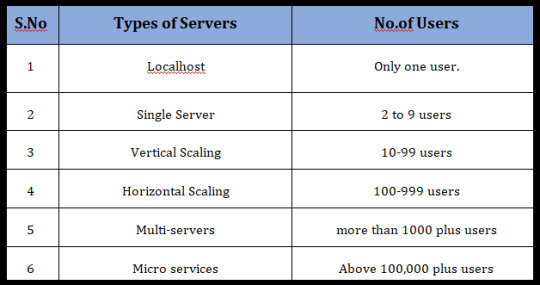
1. Localhost
Any application that runs on a developer machine for development purpose is hosting application locally. Generally, it is for the use of only one user, so there is no need to worry about scaling factor.
2. Single server
A single server system can accommodate around 1 to 9 concurrent users. Assume, your application will be used locally then the deployment will be carried out locally. It’s fine to do in a single server. For hosting the node.js application one can use Nginx as the webserver.
If you are using a single server application for few users well enough. It is simple to implement the single server and very much efficient for a few users. The requirements consist of only one CPU and 1 GB RAM, which is equivalent to web server AWS t2.micro / t2.nano.
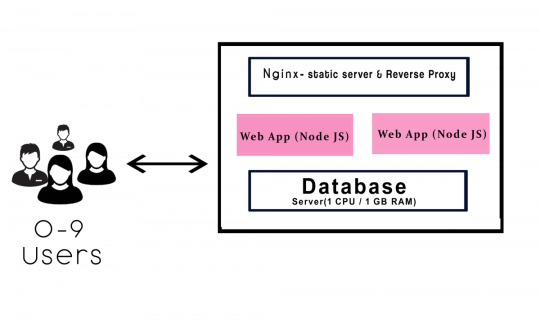
3. Vertical scaling
The term “vertical” states that to manage by adding extra capability or power to a single component. When the server begins to start slower or longer time to execute at the level we will transform to the vertical scaling. In vertical scaling the requirements consist of 4 GB RAM, which is equivalent to web service t2. medium.
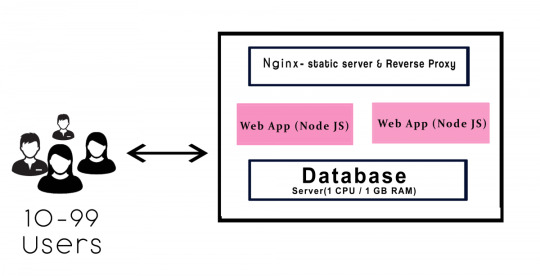
The above diagram explains the workflow in the vertical scaling.
a. It consists of two instances of Node.js which runs to deploy/update within zero downtime.
b. The function of Nginx handles the load balance.
c. If server 1 works to upgrade, then the other server keeps serving the requests. Continue this process until the buffer will get empty.
d. The purpose in Nginx takes into account of all the user requests, It consists of two functions such as a static file server and reverses proxy.
Static — The static files like CSS, JS, Images, this will not disturb the web app.
Reverse Proxy — It will access the request for the needs the application to resolve which redirects it.
4. Horizontal scaling
The Scaling horizontally, which means adding more machines to scale up your pool of resources. This concept will work out in the enterprise from the level of 100 to 1000 employees. Whenever the app responses get slowdown from the database you have to upgrade to 16 GB RAM. Cassandra, MongoDB is suitable for horizontal scaling. It provides for implementing a scale from smaller to a bigger machine.
Companies like Google, Facebook, eBay and Amazon are using horizontal scaling.

Differences
In horizontal scaling, you can add more machines to scale dynamically. If any system fails, then another system will handle the process. No worry about the process failing. It will bring high I/O concurrency, reducing the load on existing nodes and improve disk capacity.
In vertical scaling, the data resides on a single node, it gets easy to slow down when the load increases. If the system fails to process, then the whole system may get a collapse. Horizontal scaling is little bit cost-effective than the vertical scaling.
5. Multi-servers
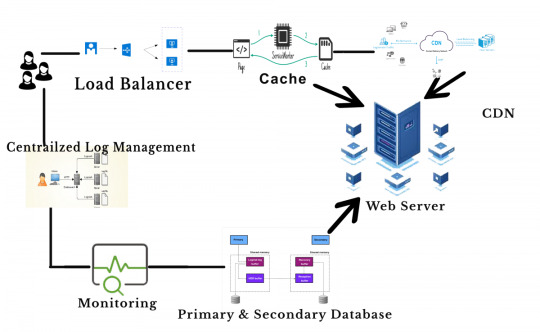
As the business grows, it’s time to add more servers to host the node.js application. The capacity of multi-servers can accommodate above 1000’s of concurrent users. Are you like to transform the previous server to the multi-servers? If Yes, continue with the following steps
1. First, add a load balancer and app units.
2. Set up multiple availability zones (AZ) in a region which one is connected through low latency links.
3. By splitting up the static files for easier maintenance.
4. CDN is one of the servers, which is used to manage files like images, videos, CSS, JS etc.,
Amazon provides load balancing through Elastic Load Balancer (ELB). It is available for the entire availability zone. This service routes to the active host only and can able to manage 1000 instances. By this set up you can use horizontally either vertically.
6. Microservices
Most of the giant companies like Netflix, Uber, Amazon are using microservices. The goals of microservice are to separate the services like search, build, configure and other management functionalities from database instances and deploy them as a separate microservices. Each of these services will take care of their tasks and can communicate with other services via API.
Traditionally we use the monolithic database. In monolithic, we can’t extend our application for several users. All modules are composed together in a single piece. As your business growing up, you have to move on the microservices. This will take to the next level in your production.
Conclusion
Hope this article helped you with scalability issues and helped you understand a bit better of how you can use the available services perfectly.
0 notes